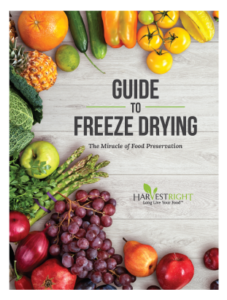Earth Day is a good time to check in and see if we can reduce our dependence on things that are either bad for the environment or things that require significant energy or resources to produce. Everyone thinks of plastic first, and we absolutely should be reducing our reliance on single-use plastics. However, reducing food waste can have a big positive impact on the environment – and on our household budgets, incidentally. Here are some facts:
One-third of greenhouse gas emissions comes from food production – including deforestation to make way for more cattle. Going meatless just once a week is now believed to be one of the most important personal decisions we can make for the environment. The next big impact is diverting food waste from landfills. The U.S. Department of Agriculture reports that Americans throw out 141 trillion calories – that’s or 1,249 calories per capita per day. On average, each of us is literally throwing out almost enough food to sustain another human. Every day.
Most of us who own a freeze dryer do so to make sure our family has food in case of an emergency – but owning a freeze dryer has other far-reaching impacts. For example, consider that the average cost of a meal at home is $2 – $4 per person. If on average we’re throwing out 40% of our food, we’re throwing out $30 per person, per week. Even saving leftovers from one meal, per person, per week would save a family of four $624 every year. And that’s conservative! You’re probably thinking what I’m thinking: Who are these glutonous, carefree people who throw perfectly good food in the trash with abandon? Not me! Well, here’s what I threw away last week:
- Bag of granola I discovered was much higher in sugar and fat than I thought
- 3/4 jar of tomato sauce – nobody could remember when it was opened
- 1/2 jar of salsa – nobody could remember when it was opened
- 1/2 container cherry tomatoes that were flavorless
- Bunch of kale that was wilting fast
- Bunch of giant carrots that kept getting passed over for pre-prepped baby carrots
- 1/2 a restaurant meal I couldn’t finish and didn’t get around to leftovers until they went bad
- Bulk package of chicken thighs that somebody bought thinking they were breasts – nobody in our house will eat thighs
So – that’s a lot of food! I have a confession though – I was thinking about this post and I was thoughtfully watching what we threw out. I realized that the kale, carrots and the chicken thighs were the main ingredients in home-made dog food and I decided it was the perfect time to start cooking for our little fuzzball. I boiled the chicken and freeze dried it along with the going-bad carrots, tasteless tomatos and wilting kale. Turns out Mr. Woofers can’t tell less-than-crisp carrots from fresh carrots and he loves chicken thighs.
This week, just observe how much food you throw out and think about who (or what) can eat it. If it’s a matter of timing, just freeze dry fresh ingredients before their expiration date – they’ll be perfectly fine to add to recipes later on.




